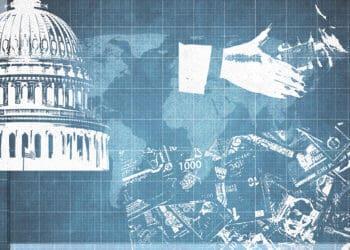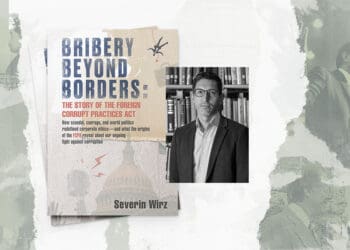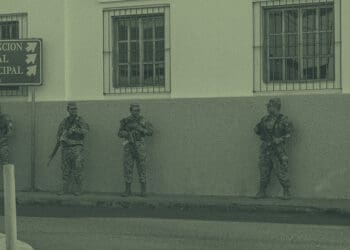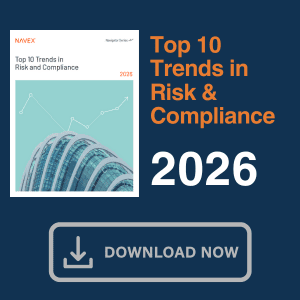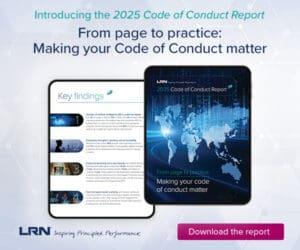Following a months-long FCPA pause, the DOJ shrank its foreign-bribery team and now requires senior approval for new investigations, prioritizing cases tied to cartels, US competitiveness and national security threats. Brazil moves in the opposite direction, working to institutionalize enforcement through transparent mechanisms that clarify negotiation processes and credit cooperation objectively. Arthur Milanez, a Brazilian attorney, explores the practical implications for global businesses, noting that voluntary self-reporting remains central in both jurisdictions but operates differently.
Recent months have witnessed two important developments in anti-corruption enforcement that may reshape corporate liability in Brazil and the US. In Brazil, the Office of the Comptroller General and the Attorney General’s Office opened a public consultation on a draft ordinance designed to modernize the system of corporate leniency agreements under the Clean Company Act. The proposal sets out clearer rules for eligibility, cooperation, fine calculation and the adoption of a “marker” mechanism that secures priority for companies willing to self-report misconduct. In the US, the DOJ announced the resumption of Foreign Corrupt Practices Act enforcement after a months-long pause, while at the same time signaling a more selective strategy: concentrating resources on cases involving national security, large-scale bribery schemes and individual liability.
These developments point to diverging institutional choices. Brazil is moving in the direction of greater transparency and predictability, while the US appears determined to maximize deterrence through fewer, higher-impact cases. For multinational companies exposed to both regimes, the contrast has immediate consequences for compliance strategies, risk management and negotiation with enforcement authorities.
The Brazilian reform: predictability through institutional design
Since Brazil’s anti-corruption law (Law No. 12,846/2013) took effect Jan. 29, 2014, it has provided the backbone for corporate liability in corruption cases. Implementation, however, has often been complicated by overlap among enforcement bodies and evolving procedural rules. Decree No. 11,129/2022 strengthened the framework and set parameters for penalty calculation, while Joint Ordinance CGU/AGU No. 4/2019 and Interministerial Normative Ordinance No. 36/2022 guided leniency practice and fine-reduction criteria. Even so, companies still faced uncertainty about forum, methodology and the credit given for cooperation.
In this context, on July 29, Brazil’s Office of the Comptroller General (CGU) and the Attorney General’s Office (AGU) released a draft joint ordinance for public consultation to update the leniency regime. The consultation initially ran until Aug. 12, 2025 and was later extended to Aug. 18, 2025; the draft is intended to replace Joint Ordinance No. 4/2019 and IN No. 36/2022.
The most notable innovation is the introduction of a marker (Art. 6) allowing a company to secure timeliness credit and negotiation priority by formally declaring its intent to cooperate even before completing an internal investigation. The draft also codifies up to two-thirds fine reductions for first-in, timely self-reporting, based on more objective criteria, and clarifies how to compute the advantage obtained while avoiding double jeopardy by crediting amounts paid in other domestic or foreign proceedings.
Another structural change is the formal memorandum of understanding (MoU) stage: Once the MoU is signed, the statute of limitations is interrupted and then suspended for up to 360 days while negotiations proceed (Art. 7, §3). The draft also sets a 90-day deadline to pay amounts due (with clear installment rules), refines transparency obligations (while protecting legally confidential information), and provides that its provisions may apply immediately to ongoing talks.
This trajectory is already visible in practice. In 2024, CGU and AGU signed three leniency agreements totaling just under BRL 290.6 million, and 21 negotiations remained ongoing into 2025, numbers that are consistent with a system moving toward more predictable, negotiated outcomes. Separately, the CGU also advanced negotiated solutions via a commitment term mechanism introduced in August 2024, signaling a policy preference for cooperative resolutions. If enacted, the new ordinance would likely reinforce these trends by calibrating incentives for early, effective cooperation and by giving companies clearer expectations on process, discounts and timing.
The US approach: strategic selectivity and renewed priorities
Following a four-month pause ordered by an executive order, the DOJ issued updated FCPA guidelines on June 9, and resumed enforcement with a narrower, priority-driven scope. During the review, the department closed a substantial share of pending FCPA matters — reported as nearly half — and the specialized foreign-bribery team shrunk to around 15 prosecutors (from an estimated 32). All new FCPA investigations now require approval by senior leadership, and enforcement will center on conduct that advances US interests.
Substantively, the June 9 memo directs prosecutors to prioritize cases tied to cartels and transnational criminal organizations; safeguard fair opportunities for US companies; and address threats to national security (e.g., critical minerals, ports, defense and key infrastructure). It also de-emphasizes de minimis or low-dollar business courtesies and stresses building cases with strong indicia of corrupt intent linked to particular individuals, underscoring the push for visible individual accountability.
For companies, this recalibration doesn’t signal weakness so much as strategic selectivity: Smaller, low-value violations are less likely to attract attention, while strategic sectors (defense, infrastructure, energy/critical infrastructure, technology) face elevated exposure when US competitiveness or security are implicated. Expect fewer cases overall but higher-consequence matters and scrutiny where alleged bribery distorts markets against identifiable US firms.
Crucially, the DOJ reaffirmed and updated its corporate enforcement and voluntary self-disclosure policy (CEP) on May 12. Under the CEP, the Criminal Division will decline to prosecute when a company voluntarily self-discloses, fully cooperates, timely remediates and no aggravating factors are present; the policy also adds a “near miss” path (typically a non-prosecution agreement, no monitor, a sub-three-year term and a 75% reduction off the low end of the sentencing guidelines). In other resolutions, reductions are capped at 50%. These benefits remain anchored in the CEP’s objective criteria; what the June guidelines chiefly affect is which cases the DOJ chooses to open or keep, not the mathematics of credit once a case is pursued under the CEP.
For US Companies Doing Business in Latin America, Regulatory Risk Multiplies Amid Web of Third Rails
Criminal networks now operate with corporate scale and structure, creating compliance intersections with AML and terrorism financing laws
Read moreDetailsComparative perspectives
Brazil and the US are indeed moving along different tracks. Brazil is working to institutionalize corporate anti-corruption enforcement — reducing discretion and adding transparency — through hard-law instruments that clarify how to negotiate, how to calculate fines and how to credit cooperation. The current draft CGU/AGU joint ordinance would replace prior acts and expressly regulates a “marker” to secure timeliness credit and negotiation priority, defines objective criteria for reductions (up to two-thirds for first-in, timely self-reporting), details methods to compute the advantage obtained and interrupts/suspends the statute of limitations (up to 360 days) once a memorandum of understanding is executed.
The US, by contrast, has adopted strategic selectivity after the 2025 pause and review: DOJ closed nearly half of pending FCPA matters and narrowed enforcement to cases with greater strategic salience (national security, US competitiveness and links to transnational crime), with new matters requiring higher-level approvals. That reallocation reflects a leaner, priority-driven model rather than a general retreat from the FCPA.
This divergence has practical consequences for companies. In Brazil, cooperation and early engagement are channelled through codified pathways (marker, MoU, quantified discounts, transparent calculations). In the US, case selection is now more discretionary and priority-based; however, once a case is opened, the CEP still provides clear, written benefits (declinations where self-disclosure/cooperation/remediation are met and no aggravators; a “near miss” NPA pathway with typical 75% off the low end, no monitor, and sub-three-year term). In other words, discretion concentrates on what the DOJ chooses to pursue, while crediting remains rule-bound under the CEP.
A further point of convergence is the premium on voluntary self-reporting and cross-border coordination. Brazil’s framework and DOJ policy both emphasize cooperation credit and mechanisms to avoid duplicative penalties across jurisdictions (the DOJ’s anti-“piling on” policy, Justice Manual § 1-12.100). In practice, Brazilian resolutions increasingly intersect with US outcomes — e.g., Petrobras (2018), in which the DOJ/SEC explicitly credited amounts paid to Brazilian authorities, and GOL (2022), where the DOJ credited a portion of the Brazilian penalty — illustrating how penalty allocation and monitorship questions are negotiated to reduce double-counting and align disclosures.
Implications for multinational companies
For global businesses, these shifts call for adaptive, split-track compliance. In Brazil, early detection and rapid scoping of issues become more valuable because the draft CGU/AGU ordinance formalizes a marker to secure priority and timeliness credit, with objective fine-reduction rules offering up to two-thirds off for timely self-reporting and effective collaboration.
In the US, sector-based risk mapping becomes a frontline prevention tool. The DOJ’s narrowed focus on strategically consequential matters — national security, competitiveness and TCO/cartel-linked conduct — means heightened scrutiny for defense, energy, critical infrastructure, technology, ports and critical minerals.
Voluntary self-reporting remains central in both jurisdictions, though it operates differently. Brazil’s draft codifies the pathway and quantum of credit; the US CEP (updated May 12) preserves clear written benefits — automatic declinations when criteria are met and a “near miss” track with typical NPAs under three years, no monitor and about 75% off the low end — but strategic selectivity now governs which cases the DOJ pursues at all.
Cross-border coordination is essential. Brazilian resolutions increasingly intersect with US outcomes, and the DOJ’s anti-“piling on” policy encourages credit for payments made abroad. Petrobras (2018) and GOL (2022) illustrate how penalty allocation and monitorship can be negotiated to reduce duplication.
In M&A, representations, warranties and indemnities should contemplate parallel Brazil–US exposure and preserve data needed under the CEP. Commercial anti-corruption clauses should reflect Brazil’s transparency expectations and capture US priority sectors. One Brazil-specific nuance: once a memorandum of understanding is executed, limitations are interrupted then suspended for up to 360 days, which impacts how companies sequence investigations and disclosures.
Historical context: Operation Car Wash and its legacy
No discussion of Brazil’s anti-corruption landscape can ignore Operation Car Wash (Lava Jato), the sprawling investigation that dominated public life between 2014 and 2021. Emerging from a money-laundering probe in Curitiba, Lava Jato uncovered systemic bribery networks involving Petrobras, major construction firms and political parties, producing over 1,400 proceedings and global repercussions. It became both a symbol of accountability and a source of deep polarization. The operation’s early cases were the first to apply the Clean Company Act in practice, testing Brazil’s then-nascent framework for corporate liability and cross-border cooperation. Many of the largest leniency agreements of that period — Petrobras, Odebrecht, Braskem — were negotiated jointly with US and Swiss authorities, establishing a precedent for coordinated global enforcement.
At the same time, Lava Jato exposed the weaknesses of Brazil’s institutional design. Fragmentation among enforcement bodies (CGU, AGU, MPF, TCU) led to overlapping demands, unpredictable outcomes and uncertainty about crediting payments or cooperation across fora. The concentration of power in a small group of prosecutors raised questions about procedural safeguards and political accountability, culminating in the Supreme Federal Court’s rulings that curtailed parts of the investigation. These tensions underscored the need for clearer, rule-based mechanisms to balance deterrence with due process, a lesson that directly informs the current CGU/AGU reform agenda.
In this sense, the proposed modernization of Brazil’s leniency system represents an attempt to consolidate Lava Jato’s achievements while correcting its institutional excesses. The draft joint ordinance, with its marker mechanism, standardized fine-reduction criteria and defined negotiation stages, channels what was once an improvisational process into a structured, transparent model. If Lava Jato proved that enforcement could reach the highest levels of business and government, the new framework aims to ensure that such accountability is exercised predictably, lawfully and without political distortion. By codifying procedures that were once discretionary, Brazil seeks to preserve the legitimacy of anti-corruption enforcement while insulating it from the volatility that marked the Lava Jato era.




 Arthur Milanez is an attorney focused on business development and cross-border investments, a former associate at GVM | Guimarães & Vieira de Mello Advogados (Brazil) and a master’s candidate in law at the University of São Paulo (USP). He also holds a postgraduate specialization in economic criminal law from the Pontifical Catholic University of Minas Gerais (PUC-MG).
Arthur Milanez is an attorney focused on business development and cross-border investments, a former associate at GVM | Guimarães & Vieira de Mello Advogados (Brazil) and a master’s candidate in law at the University of São Paulo (USP). He also holds a postgraduate specialization in economic criminal law from the Pontifical Catholic University of Minas Gerais (PUC-MG). 